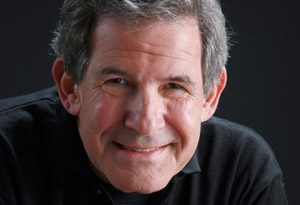How to Deal with Negativity and Chaos

In basic terms of the principle The Law of Attraction, we attract those things that we think of the most. Like attracts like, and positive and negative thinking bring about positive and negative results, respectively.
Here’s how it works. Human beings, rocks, plants, animals—everything in the universe—is energy. According to quantum physics, the energy within something determines its vibration, or frequency. Even every thought we have has a frequency. The quality of our thoughts and our life energy (also known as chi or prana) is what attracts our experiences to us. Negative thoughts create a low vibrational frequency, and positive thoughts create a high vibrational frequency.
All human beings are transmitting energy at every moment (positive/strong/high or negative/weak/low). The lowest frequencies are produced by unhappiness, depression, negativity, and anger at the world. The middle frequency is the state of autopilot, where you just keep doing and creating the same old thing. The highest frequency is happiness; you are in the flow of life and you attract and manifest what your heart desires.
Other people pick up and take on this energy. We’ve all experienced that when we leave the presence of a person who has positive energy, we feel positive, energized, and inspired. But being in the presence of a negative person can leave us feeling negative, exhausted, and drained.
Life’s difficulties and obstacles provide us with an opportunity to grow and learn. Look at your life as an obstacle course. You can face and take on the obstacles and challenges one at a time, pursuing the course regardless of its difficulty, learning and getting better as you go. Then, when you reach the finish line, your destination, you will feel deep satisfaction with your accomplishment. Or you can allow the obstacles to become reasons to quit, keeping you from finding your path, purpose, and destination.
If you try hard there is always something positive that can be found in any situation. It can be difficult for negative people to see positivity, as negativity can become a habit and habits can be hard to overcome. But you can conquer them. If you can recognize negative behavior within yourself, you can become accountable for yourself, becoming aware of the energy you produce and transmit (send out) to others. Once you accept responsibility for your thoughts, attitude, words, actions, and circumstances, you will be empowered to make new, positive choices, which will create a new reality for you.
5 ways to deal with negative, chaotic thoughts:
1. Try saying "STOP" or "OUT" as soon as negative thoughts want to enter your mind. As silly and strange as this may sound, it works! Try it and you’ll notice a significant decrease in the negative chatter of the mind.
2. Just stop, breathe, and seek inner guidance. Think about something you are grateful for, and this will immediately distract your ego and remove the negative thoughts.
3. Change your perspective and ask yourself if the situation is going to matter a year from now. If not, let it go. Learn to let go of all the stuff you can't control.
4. Learn to be an observer instead of a participant, a listener instead of a talker; not everything needs a reaction.
5. Remove the source of drama from your life, whether it is an unhealthy relationship or a draining environment. Surround yourself with positivity. It's that simple.
Be responsible for the energy and vibe that you bring to the world and remember that what you give out will be returned to you tenfold.
George Foreman has a wonderful take on this. He describes his ability to deal with negativity this way: "That's my gift. I let that negativity roll off me like water off a duck's back. If it's not positive, I didn't hear it. If you can overcome that, fights are easy.”
Published September 24, 2012 at 11:50 AM






![Krista-Varady-600x400b[1]](http://isagenixhealth.net/wp-content/uploads/2012/09/Krista-Varady-600x400b1-150x150.jpg)